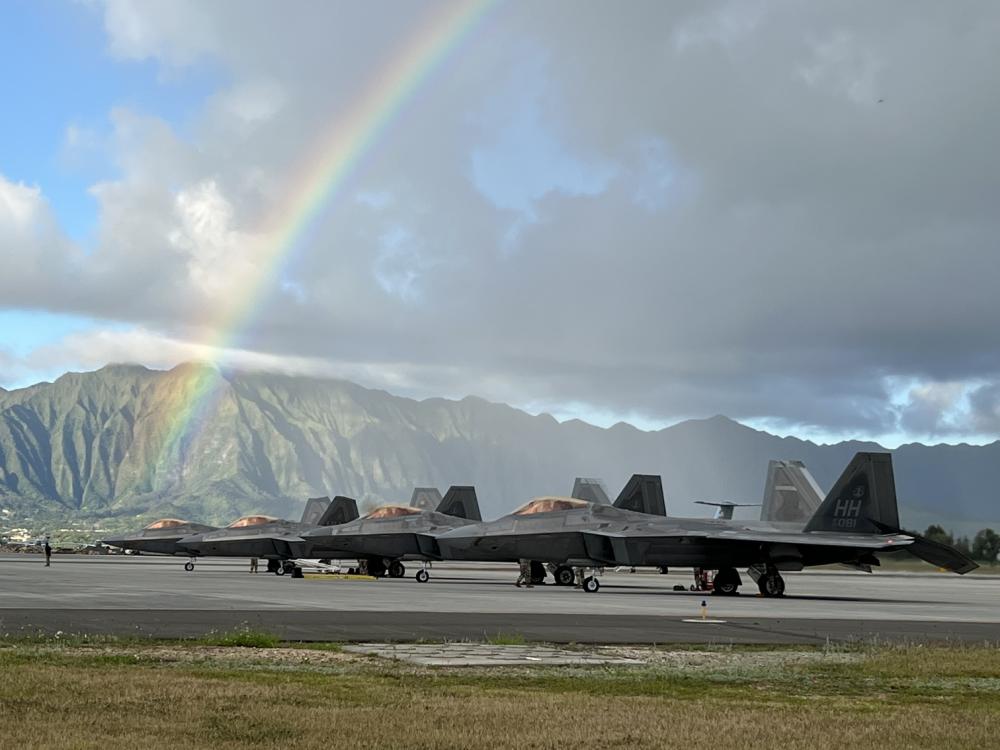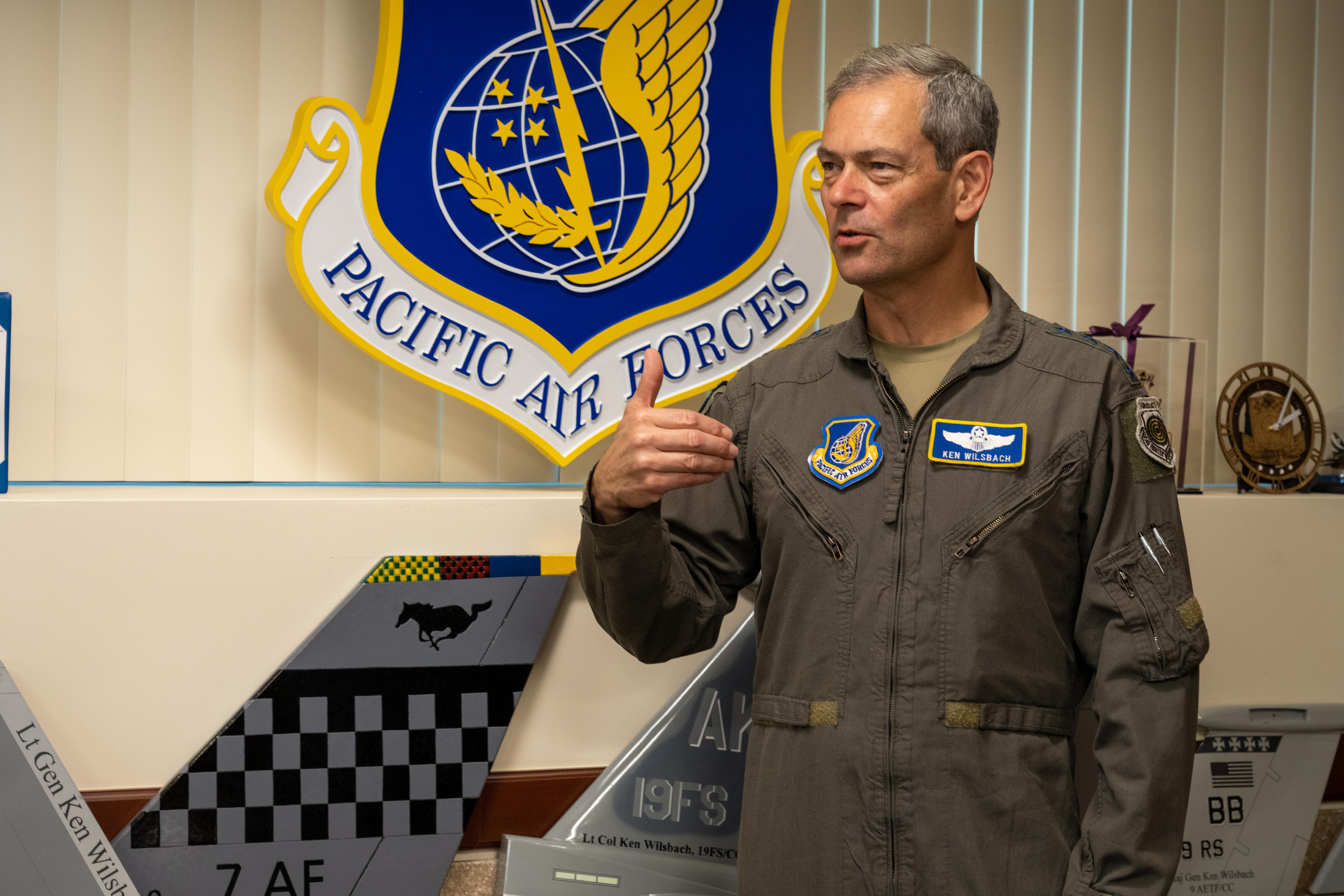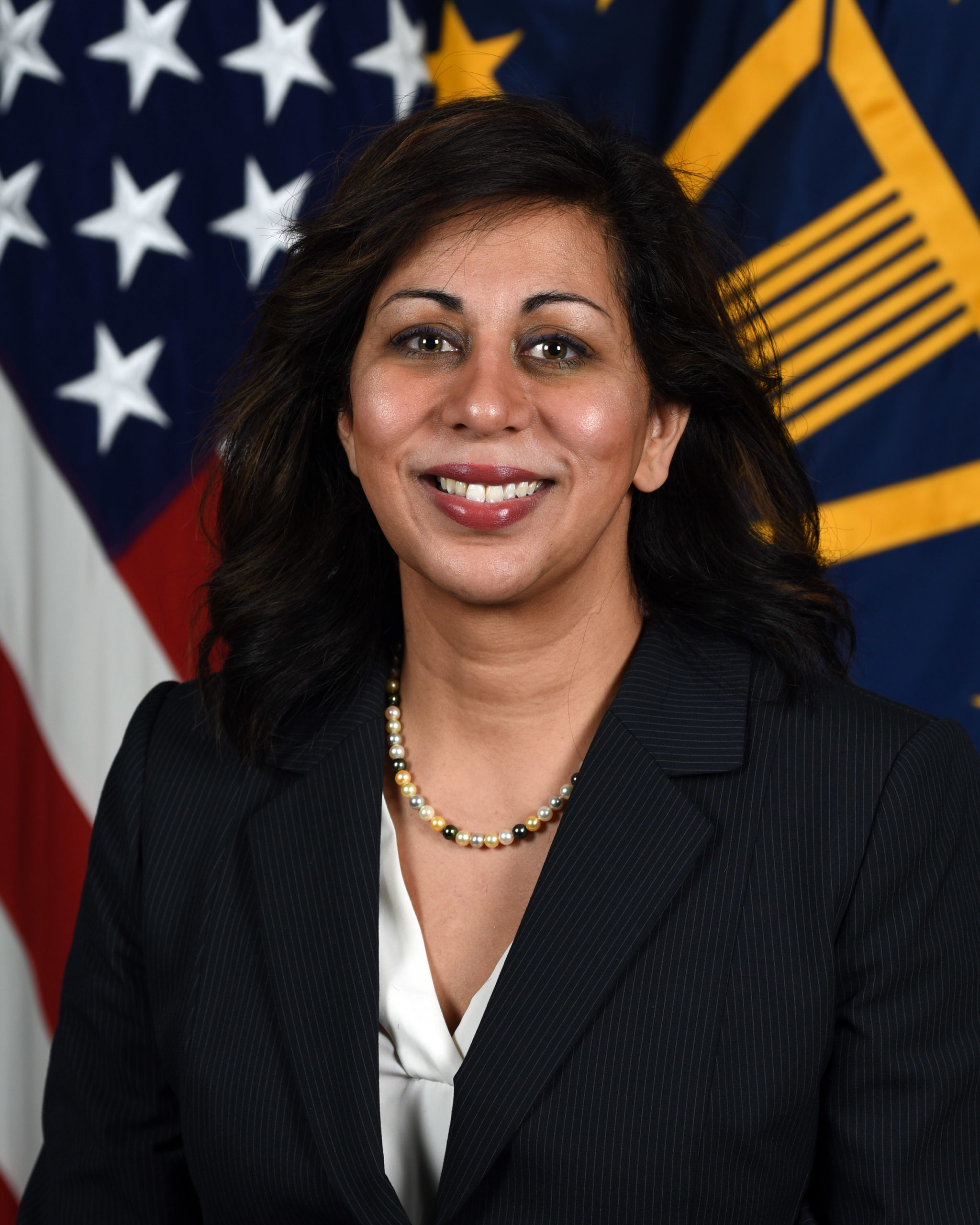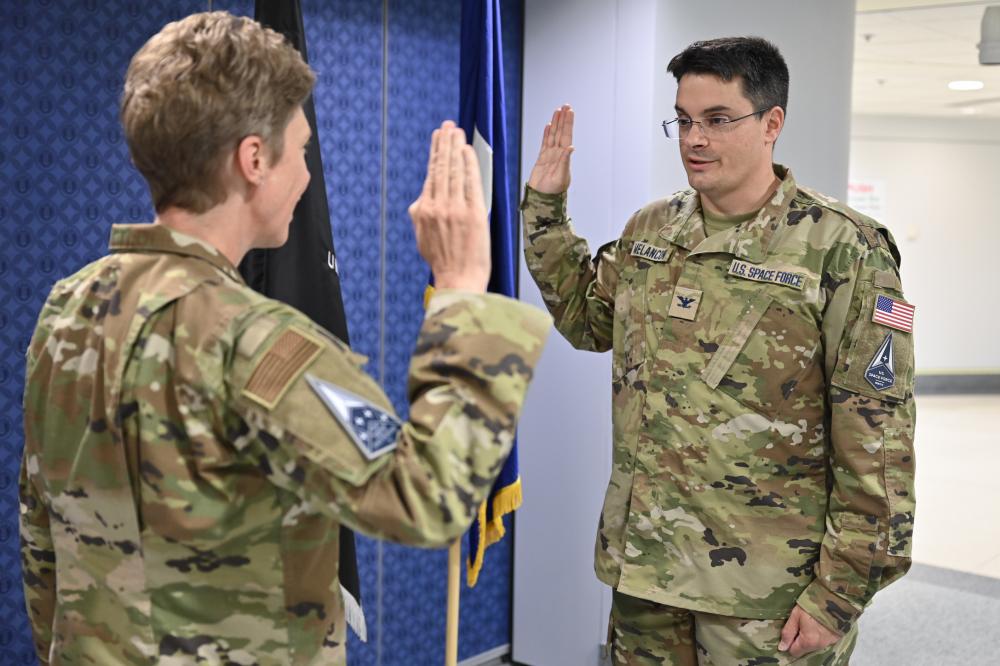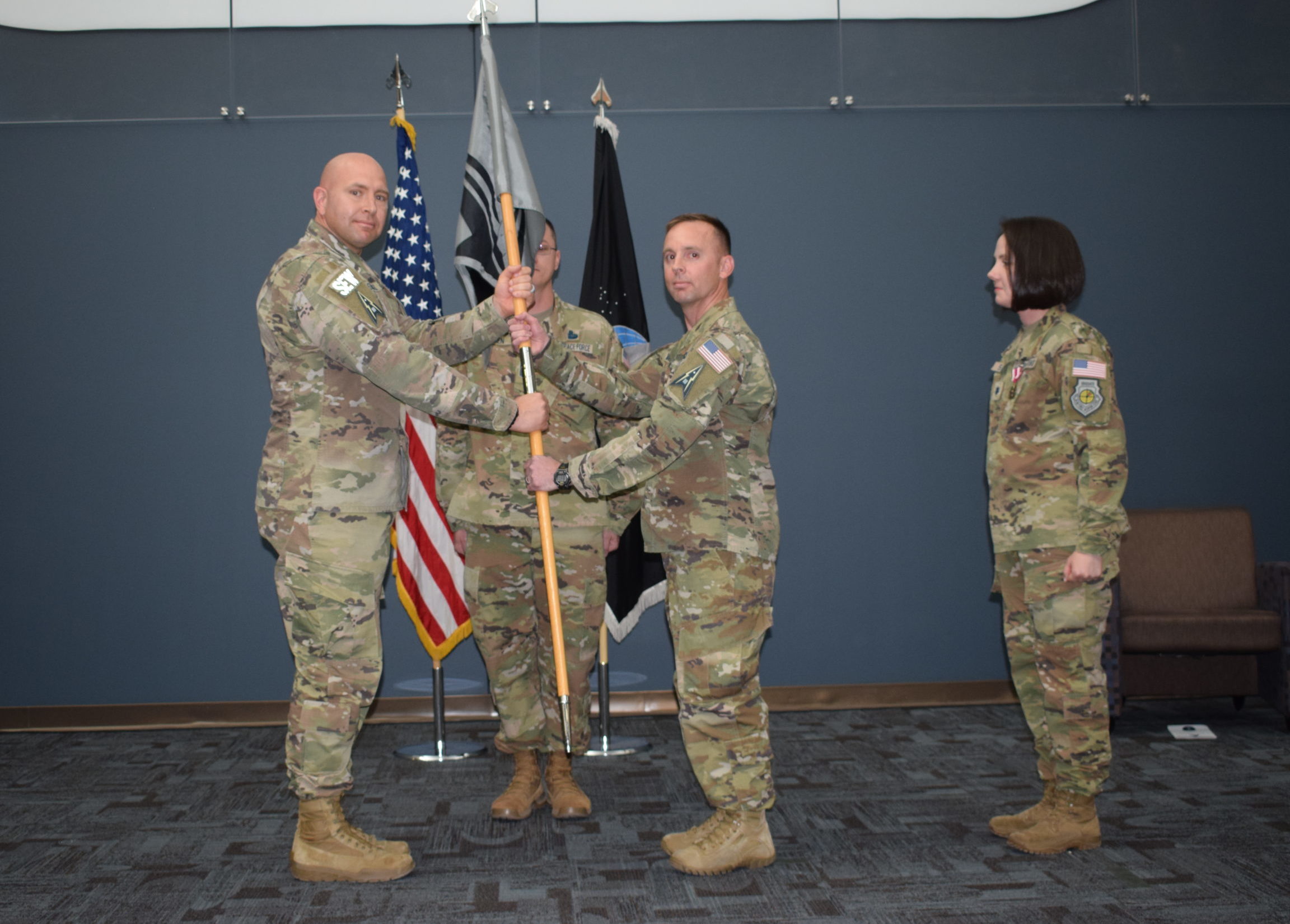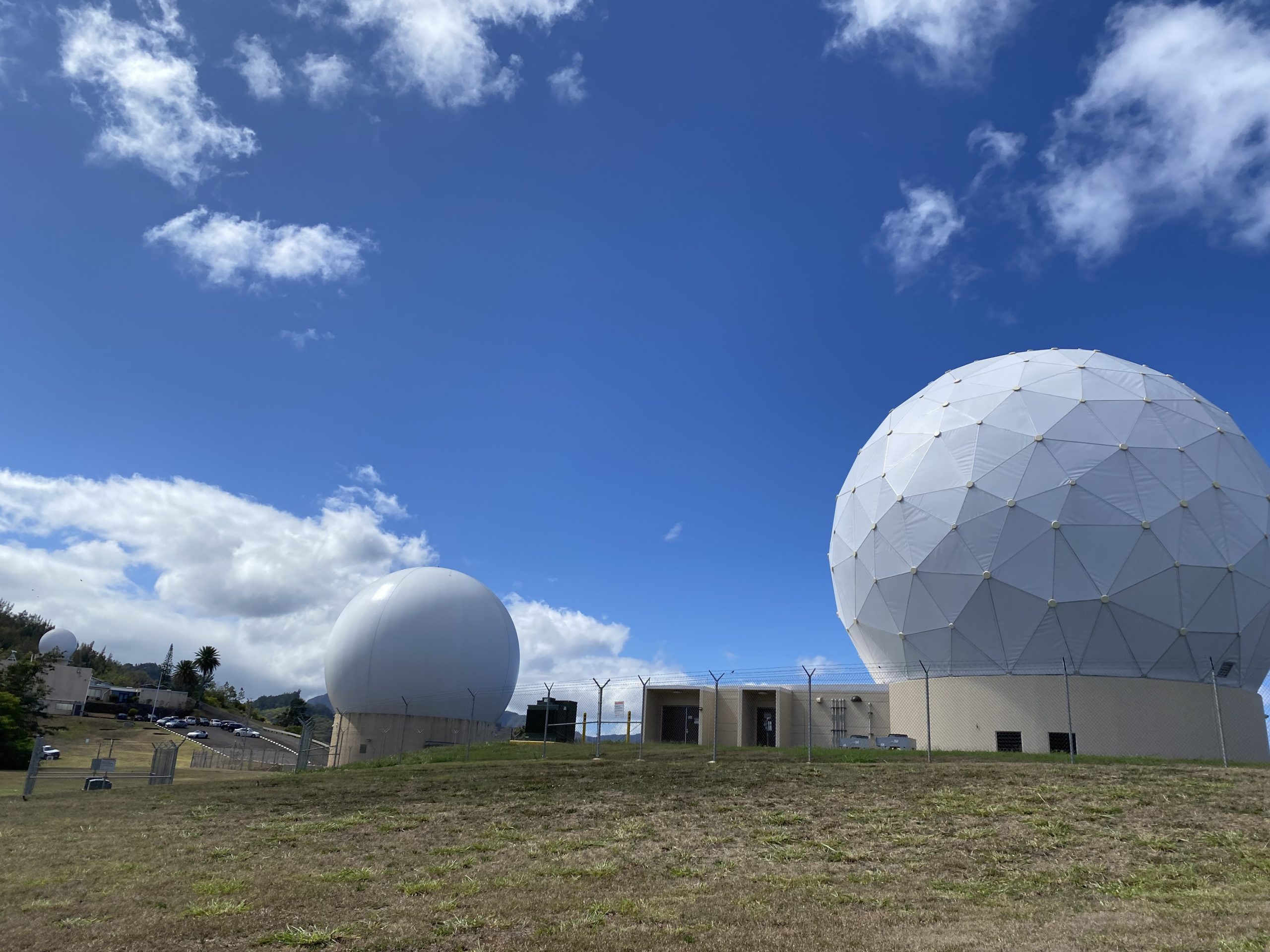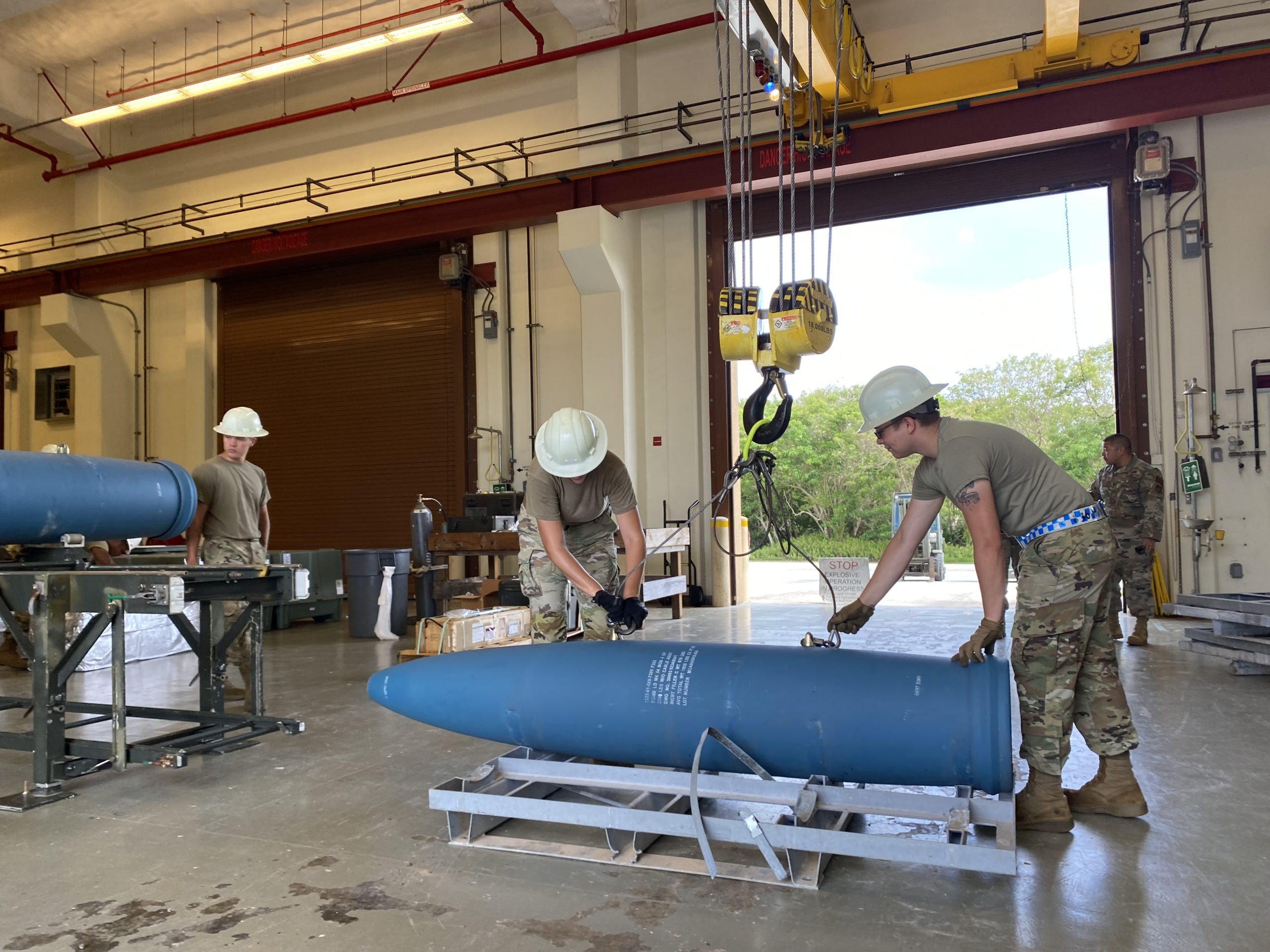JOINT BASE PEARL HARBOR-HICKAM, Hawaii – Six years ago, agile combat employment was a PowerPoint presentation backed by Pacific Air Forces leadership; today, ACE is a proven operating concept and the Air Force is spreading it to share with new partners, according to PACAF commander Gen. Kenneth S. Wilsbach.
“ACE was a new thing a while back, and now it’s just normal ops,” Wilsbach said in an interview at his headquarters at Joint Base Pearl Harbor-Hickam in Oahu, Hawaii. “We had to convince the rest of the Air Force that we needed to go in this direction.”
Fifth-generation aircraft are now practicing ACE during exercise Valiant Shield in the island nation of Palau in the Pacific, but Wilsbach said PACAF no longer waits for a major exercise to practice the concept. “Really, all the bases in the Pacific are doing ACE as a component of their day-to-day training,” he said.
PACAF practices ACE on austere island chains like the Marianas, which include American territories Guam, Tinian, and Saipan, and extends to other Pacific partners, including Japan and Korea.
Retired Lt. Gen. David A. Deptula, dean of AFA’s Mitchell Institute for Aerospace Studies, said practicing ACE beyond the Northern Marianas island chain is critical in case of conflict.
“ACE is a means to complicate an adversary’s targeting,” he said. “It’s great that you can operate at Andersen [Air Force Base, Guam], at Tinian, in Saipan. Those are all within the same geographical area. [But] where else are you planning to exercise from that involves dispersed bases?”
Zack Cooper, research fellow at the American Enterprise Institute, said the challenges are different across the region. A new government in the Philippines, for example, leaves uncertain the state of relations there. Other security partnerships in Southeast Asia are limited, he said.
“We’re seeing the Chinese making a huge Pacific islands push right now,” he said. “One side is posture, another side is actual capability development with those allies and partners.”
Wilsbach said mainland Japan air bases Yokota, Kadena, and Misawa all practice ACE, as does the Japanese Air Self-Defense Force, known as “Kōkū Jieitai” in Japanese.
“We’ve actually been doing quite a bit of ACE in Japan,” Wilsbach said. “Even the Japanese have been doing ACE, the Kōkū Jieitai have been really starting to get their ACE game on as well.”
In South Korea, where the threat from North Korea outweighs the challenge posed by China, ACE is catching on more gradually. “In Korea, our forces are practicing ACE, not in the full spectrum like you’ve seen around the Marianas Islands, but at least part task trainers,” said Wilsbach said. “Perhaps taking off out of Osan [Air Base], and landing at another base, getting a quick turn and getting airborne again.”
Multi-capable Airmen skill sets are regularly rehearsed in both Korea and Japan, he said, such as pilots refueling their own aircraft, practicing landing away from their home base, and turning the aircraft with limited support. “That’s all happening as the normal course of business,” Wilsbach said. “We’ve also had some ACE-like operations even in Australia … in the Philippines and … Palau.”
Getting to IOC
Wilsbach helped usher in the inception of ACE as commander of the 11th Air Force at Joint Base Elmendorf-Richardson, Alaska, between 2016 and 2018. Now as PACAF commander, he will likely see ACE achieve initial operating capability in the Pacific. “ACE for the entire Air Force started [in] Alaska,” he said. “Our forces in Alaska have been doing ACE now for coming up on five years.”
In Hawaii, the island chain enables hub and spoke operations, starting in Hickam and focusing on landings, maintenance, and austere air base in the surrounding islands. “The F-22 squadron here will … take off, and then they’ll land at one of the other islands or maybe even at Kaneohe Bay [Marine Corps Air Station], they’ll get a quick turn, and then they’ll get airborne again.”
To describe the next challenge for ACE, Wilsbach offered the Hawaiian island chain as a complex command-and-control problem. “It’s pretty easy to know what’s going on with your jets if they take off from say, Hickam Air Force Base, and they launch and they do a mission, and they come back to Hickam,” Wilsbach began. “But imagine if Hickam is a hub, and you’ve got every one of the other Hawaiian Islands as a spoke. Now they go airborne, and now you’ve got somebody on the Big Island, you’ve got somebody in Maui, you got somebody at Kauai. Now it gets a little more difficult knowing what’s going on.”
Maintenance, parts delivery, munitions, fuel, and more suddenly get more complicated. “It’s a constant, constant movement,” he said. “And then maybe they don’t even land, maybe there’s a tanker and they hit the tanker, and they just keep going.”
An aircraft that needs maintenance might need to return to the hub, rapidly replaced with a ready aircraft at the spoke. Wilsbach said wings across the Pacific must test and reheard the command-and-control requirements to make ACE operational. “All the wings in PACAF are working through it, finding out what the challenges are, and tackling those challenges with new innovations and new communication kit,” he said.
Wilsbach said he is “very confident” his wings can do ACE now if the need arises. “We’re in a good spot. We’re working, we’re continuing to expand that ACE envelope every single day. We’ve been working pretty aggressively over the last few years providing every single wing some foundation of ACE capability, and every wing is a little bit different as to where they go, how they disperse, how much multi-capable Airmen capability they actually have,” he said. “Every wing … is slightly different, but everybody’s got a foundation.”
